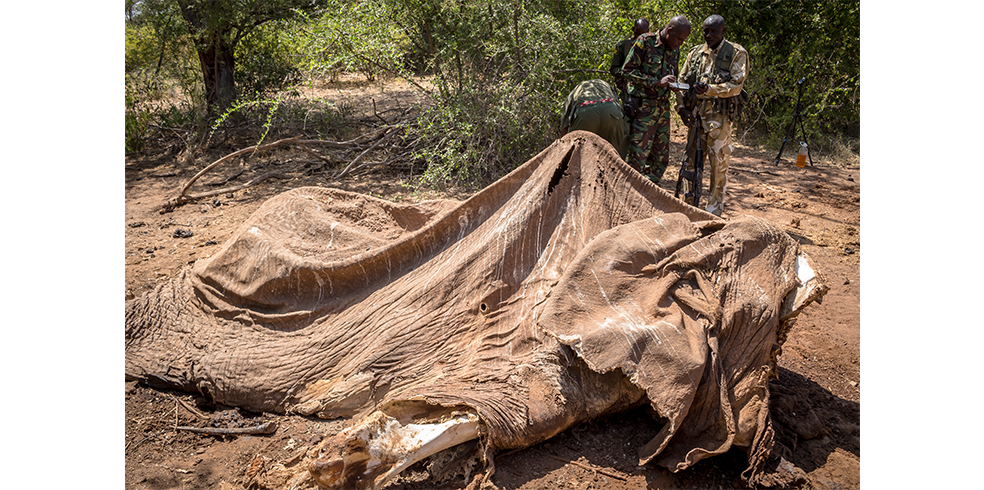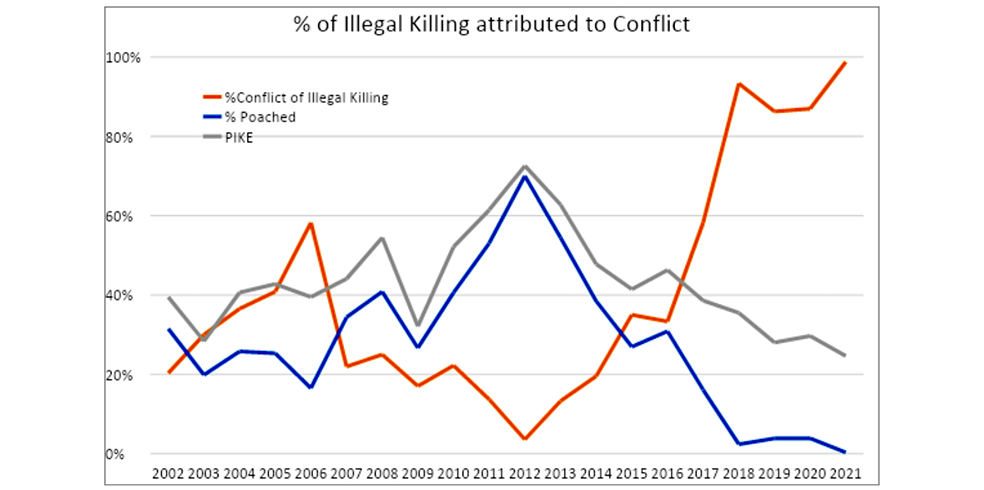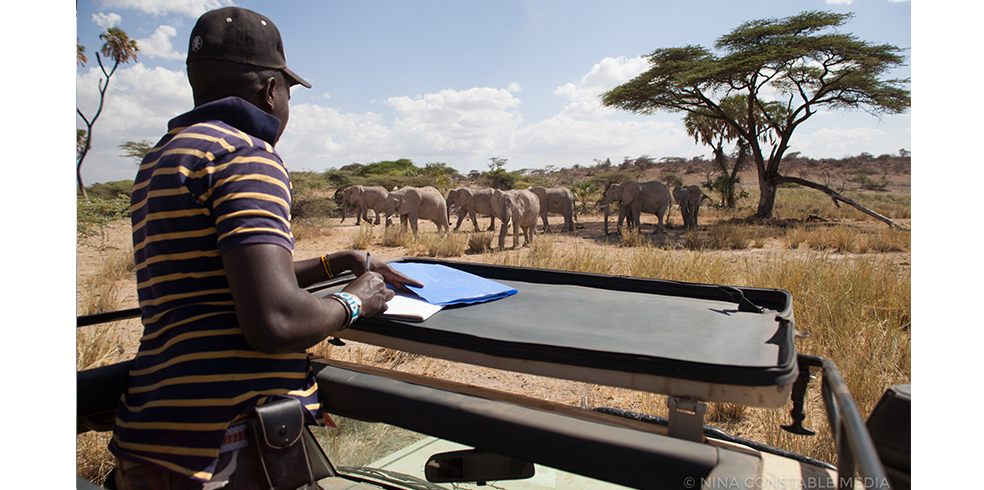A vast expanse of semi-arid land in northern Kenya – home to an estimated 7,500 elephants, may be acting as an early warning system for threatened elephant populations across Africa.
Data on elephant mortality from the Samburu-Laikipia MIKE (Monitoring of Illegal Killing of Elephants) programme site was first used by Save the Elephants in 2009 to alert the world to escalating levels of poaching across the continent. It was later the cornerstone of a study that estimated 100,000 elephants were killed for their ivory between 2010 and 2012, and which formed the foundation of many campaigns to end the ivory trade.

Rangers investigate and record details of an elephant carcass in Samburu National Reserve © Robbie Labanowski/Save the Elephants
Today, worrying new data from the same site indicates that although poaching has reduced, human-elephant conflict (HEC) is on the rise. The Samburu-Laikipia data shows that such conflict now accounts for almost all of the illegal elephant killings in the ecosystem. In 2021, half as many elephants died in the Samburu/Laikipia ecosystem from causes recorded as conflict, as died from poaching at the height of the crisis (in 2012). This rise in conflict killing is also in line with what we are hearing anecdotally from our partners across Africa.
The MIKE programme, established by the UN Convention on International Trade in Endangered Species (CITES), is the only continental measure of poaching pressure. Under the programme, local personnel from 57 sites across Africa collect field data on dead elephants, verify cause of death and submit the data to the MIKE program for analysis. This information enables MIKE to identify any changes in poaching pressure, and to develop both a subregional and continent-wide picture of the extent of and trends in the illegal killing of elephants.

MIKE data for the Laikipia/Samburu MIKE site records conflict as the cause of over 90% of illegally killed elephants. Graph: George Wittemyer
The Samburu-Laikipia ecosystem is the most data-rich of all 57 MIKE sites and has one of the continent’s most well-studied elephant populations. For the past 30 years, Save the Elephants has gathered MIKE data on wild elephants. We work closely with Kenya Wildlife Service to ensure the data is well-maintained, and co-ordinate harmonisation meetings to consolidate elephant mortality statistics with partners including the Northern Rangelands Trust, Lewa Wildlife Conservancy, the Samburu Trust, and Space for Giants.
Thanks to our long term understanding of the Samburu elephant population we are able to calibrate what the MIKE data means in real terms. For example in 2009, at the start of the poaching epidemic, we could see from the MIKE data that if levels of illegal killing exceeded 54% of total deaths, this population would be in decline.

STE researcher, David Letitiya, collects data on elephants in the field as part of STE’s Long Term Monitoring program © Nina Constable/Save the Elephants
Today, we believe the MIKE data is sending out another warning signal, this time around conflict between humans and elephants. Currently, such conflict accounts for one in every four elephant deaths in the ecosystem.
Human-elephant conflict in pastoralist systems is complex, and we are working to understand it better so we can help resolve it. Unlike poaching, where the poacher usually removes the tusks from an elephant, conflict is multi-faceted. It can be linked to a variety of incidents from baby elephants falling down wells to adults found with gunshot and spear wounds. This makes conflict killings hard to identify within the MIKE system, and therefore hard to track.
As elephant populations recover from the ivory trade and re-expanding across landscapes like northern Kenya, they are encountering a world transformed by modern pastoralism and agriculture. Solutions are urgently needed for both elephants and people. Data – such as that provided by the MIKE programme – are crucial for understanding the challenge, and how it is developing.
Top image: Elephant bull, Sarara, pictured with a spear in his side following a human elephant conflict incident last year © Gilbert Sabinga/Save the Elephants

